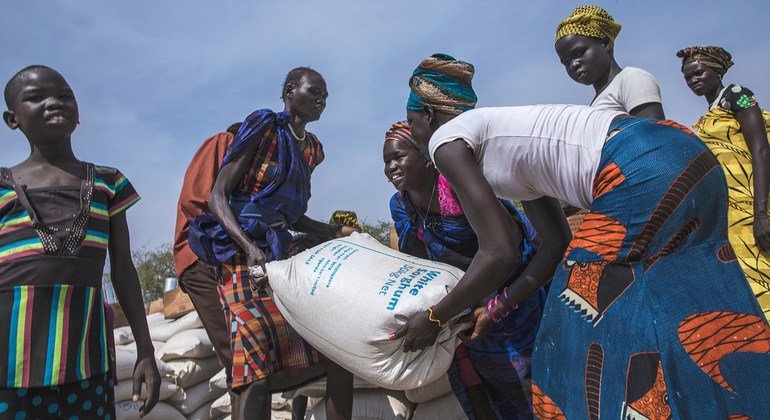Sudan is weeks away from hunger crisis as food stocks deplete

Food is getting scarcer by the day in Sudan.
The conflict has caused the transfer of cash in and out of the country to effectively stop. Among the most serious consequences of this is that international and regional traders of commodities that make up Sudan’s food supply chain cannot get paid and repatriate funds, making the flow of sugar, rice and grains all but impossible.
In the normal course of business, traders pay for goods at Port Sudan in Sudanese pounds. The cash is then taken physically by car to Khartoum to be converted and sent out as foreign currency. But no cash convoy is going through a war zone. Beyond human risk, should a stray missile hit, there is nothing that can be done to claim back those funds.
As a solution, traders are working to re-establish the banking sector in Port Sudan so that payments can once again start to flow and, in turn, food and goods. But no one expects a quick fix.
The other huge challenge for food importers and traders is a complete lack of storage capacity. In the key cities of Khartoum and Omdurman, traders can’t risk storing any stock as it will be looted, and the limited warehousing at Port Sudan is full. Overall, warehousing capacity nationwide has been cut down enormously, probably by 75%.
What this all means is that Sudan is running completely hand-to-mouth on all major food products—rice, wheat and sugar. If the situation is not resolved, Sudan faces a hunger crisis within weeks. The country typically runs with around 2-3 months of consumption in stock, but we expect this to draw down to around a month of consumption as hostilities, inability to transact, and the complete lack of storage capacity prevent new food from arriving.
Stocks of sugar are currently around 292 kilo metric tons, less than half the pre-conflict stock of 645kMT in February, based on measures of shipping cargoes compiled by Kulea. We estimate levels will almost halve again by November to 169kMT.
Technically, Port Sudan is open and working. But the big vessels of sugar, rice and wheat aren’t going in anymore.
We have seen only one vessel, which berthed on May 14 after sitting outside the port for a month since the fighting erupted in April. Having remained stationary alongside the wharf for weeks, the sugar vessel, the MV Royal O, finally managed to discharge 12,500 tons of her 21,500-ton load in Sudan, before heading on to Egypt to offload the remainder.
Fighting is likely to continue to limit activity at Port Sudan, with customs and port authorities unable to do their jobs, and P&I clubs voiding protection and indemnity insurance should any vessel owners decide to take their ships in, making the risk prohibitively high in the current situation.
We are already starting to see food prices increasing locally as a result. While the war is creating some reduction in local demand, with a decline of around 7-8% for sugar, or 150,000 tons, we expect the drawdown on current stocks in the country to ultimately push prices higher.
To an extent, we anticipate some cargo diversion via other ports into Sudan should the port’s problems continue. Most likely is the Libya route, though this is a long and expensive transit to service the main consumption points of Sudan around Khartoum, so it may not be sustainable in the longer term.
Ultimately, we expect that harsher sanctions will return to Sudan, which will mean that creative trading houses will re-emerge to convert cash proceeds into commodity flows. The country is especially critical for traders of white sugar contracts on the London LIFFE exchange, as it remains the primary destination for expiring futures trades.
For now though, the conflict is forcing Sudan to consume far less. The nation is living hand-to-mouth.

